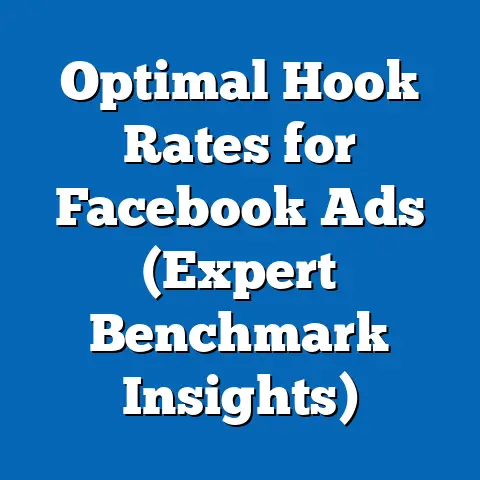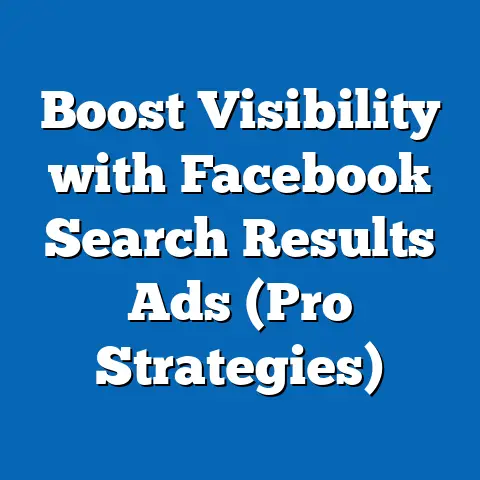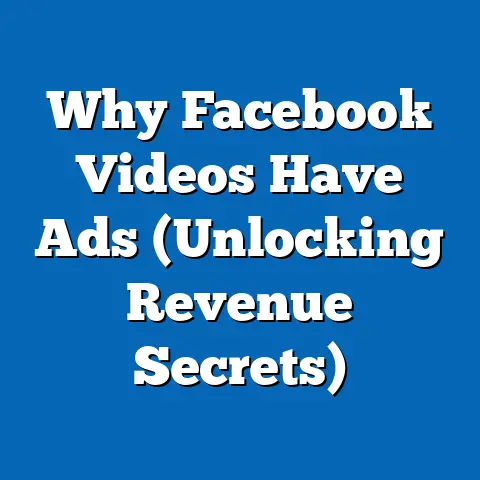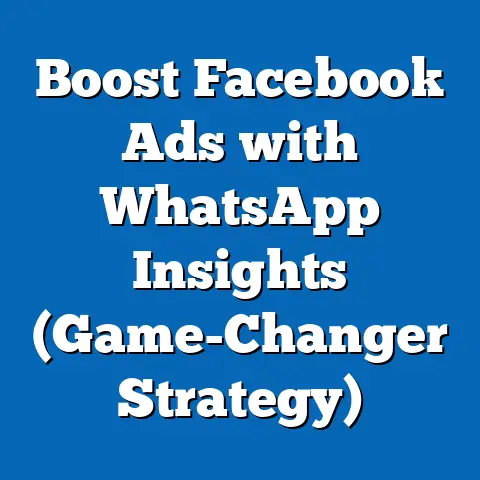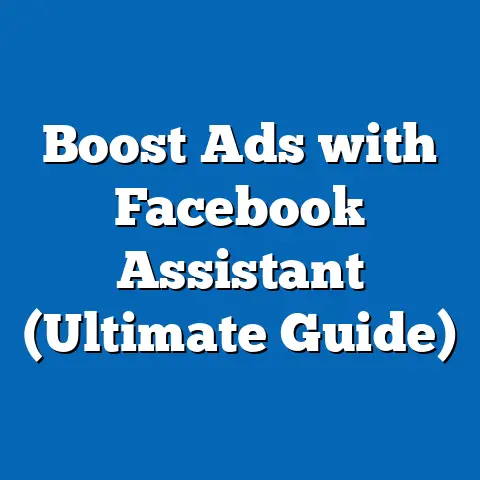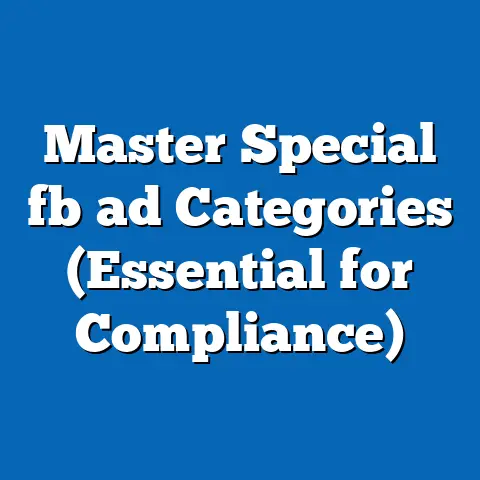Transform Facebook Ads with Bots (Boost Engagement Now)
In today’s fast-paced digital landscape, capturing and retaining user attention is more challenging than ever. Facebook, a giant among social media platforms, has become a battleground for advertisers vying for a slice of the audience’s attention. With countless posts, ads, and updates flooding users’ feeds daily, standing out requires innovative strategies that go beyond traditional advertising methods. That’s where the integration of bots with Facebook ads comes into play. This revolutionary technique is designed to enhance user interaction and engagement in ways that static ads simply can’t.
I’ve seen firsthand how a well-placed, intelligently designed bot can transform a lackluster ad campaign into a lead-generating machine. It’s not just about automating responses; it’s about crafting an experience that resonates with users, provides value, and ultimately drives conversions. But how exactly can bots transform your Facebook advertising strategy and drive meaningful engagement? Let’s dive in and explore the exciting world of bots in Facebook ads.
Section 1: Understanding the Role of Bots in Advertising
Before we jump into the “how,” let’s clarify the “what” and “why.” Bots, short for robots, are automated software applications designed to perform specific tasks. In the realm of marketing, bots come in various forms, each serving a unique purpose.
Types of Bots in Marketing
- Chatbots: These are the most common type of bot, designed to simulate human conversation. They can answer questions, provide information, and guide users through a specific process.
- Automated Response Bots: These bots are simpler, primarily used to respond to common queries or provide basic information. They often act as a first line of communication.
- Task-Oriented Bots: These bots are designed to perform specific tasks, such as scheduling appointments, processing orders, or providing customer support.
How Bots Work in Facebook Ads
Bots work within Facebook ads by leveraging the platform’s Messenger API. When a user clicks on a “Send Message” call-to-action in an ad, they’re directed to a Messenger conversation with the bot. This conversation can be pre-programmed to guide the user through a series of interactions, providing information, collecting data, or even making a sale.
The technology behind these bots is often a combination of AI (Artificial Intelligence), machine learning, and natural language processing (NLP). AI allows bots to understand and respond to user input, while machine learning enables them to learn from past interactions and improve their performance over time. NLP helps bots interpret the nuances of human language, making conversations feel more natural and engaging.
The Effectiveness of Bots: Statistics and Case Studies
The effectiveness of bots in enhancing user engagement is well-documented. Consider these statistics:
- According to a study by HubSpot, 71% of people believe they would use a messaging app to get customer support.
- Grand View Research estimates that the global chatbot market will reach $102.29 billion by 2028, highlighting the growing adoption of this technology.
- ManyChat reports that businesses using their platform have seen a 3-5x increase in lead generation compared to traditional methods.
I remember working with a small e-commerce business that was struggling to generate leads through Facebook ads. We implemented a chatbot that asked users a series of questions about their preferences and then recommended products based on their answers. The result? A 4x increase in lead generation and a significant boost in sales.
Key Takeaway: Bots offer a powerful way to engage users on Facebook by providing personalized experiences and automating key tasks.
Section 2: Step-by-Step Guide to Implementing Bots in Your Facebook Ads
Now that we understand the power of bots, let’s walk through the process of implementing them in your Facebook ads.
1. Identifying the Goals
Before you start building a bot, it’s crucial to define your goals. What do you want to achieve with your Facebook ads and how can a bot help you get there? Here are some common goals:
- Lead Generation: Collect contact information from potential customers.
- Customer Support: Answer frequently asked questions and provide assistance.
- Sales: Guide users through the purchase process and close deals.
- Brand Awareness: Increase visibility and engagement with your brand.
- Product Education: Inform users about your products or services.
I always tell my clients to start with the end in mind. What action do you want users to take after interacting with your bot? Once you have a clear goal, you can design a bot that’s tailored to achieve it.
2. Choosing the Right Bot Platform
There are numerous platforms and tools available for creating and implementing bots. Here are some of the most popular options:
- ManyChat: A user-friendly platform that’s perfect for beginners. It offers a visual interface for building bots and integrates seamlessly with Facebook Messenger.
- Chatfuel: Another popular platform with a drag-and-drop interface. It’s known for its advanced features, such as AI-powered responses and integration with other marketing tools.
- MobileMonkey: A powerful platform designed for marketers who want to automate their entire marketing funnel. It offers advanced features like SMS marketing and chatbot analytics.
- Dialogflow (Google): A more technical option that requires some coding knowledge. It’s ideal for building complex bots with advanced AI capabilities.
Here’s a comparison table to help you choose the right platform:
| Platform | Ease of Use | Pricing | Key Features | Best For |
|---|---|---|---|---|
| ManyChat | Easy | Free plan available; Paid plans start at \$15/month | Visual bot builder, Facebook Messenger integration, growth tools, analytics | Beginners and small businesses looking for a user-friendly platform |
| Chatfuel | Easy | Free plan available; Paid plans start at \$15/month | Drag-and-drop interface, AI-powered responses, integration with other marketing tools, analytics | Businesses looking for advanced features and integrations |
| MobileMonkey | Medium | Free plan available; Paid plans start at \$14.95/month | SMS marketing, chatbot analytics, automation tools, lead generation | Marketers who want to automate their entire marketing funnel |
| Dialogflow | Difficult | Free plan available; Paid plans based on usage | Advanced AI capabilities, natural language processing, integration with Google Cloud | Developers and businesses looking for highly customizable and complex bots |
| Platform | Ease of Use | Pricing | Key Features | Best For |
|---|---|---|---|---|
| ManyChat | Easy | Free plan available; Paid plans start at \$15/month | Visual bot builder, Facebook Messenger integration, growth tools, analytics | Beginners and small businesses looking for a user-friendly platform |
| Chatfuel | Easy | Free plan available; Paid plans start at \$15/month | Drag-and-drop interface, AI-powered responses, integration with other marketing tools, analytics | Businesses looking for advanced features and integrations |
| MobileMonkey | Medium | Free plan available; Paid plans start at \$14.95/month | SMS marketing, chatbot analytics, automation tools, lead generation | Marketers who want to automate their entire marketing funnel |
| Dialogflow | Difficult | Free plan available; Paid plans based on usage | Advanced AI capabilities, natural language processing, integration with Google Cloud | Developers and businesses looking for highly customizable and complex bots |
I’ve personally used ManyChat and Chatfuel and found them both to be excellent platforms. ManyChat is great for getting started quickly, while Chatfuel offers more advanced features for those who need them.
3. Integrating Bots with Facebook Ads
Once you’ve chosen a platform, it’s time to integrate your bot with your Facebook ads. Here’s a step-by-step process:
- Create a Facebook Business Account: If you don’t already have one, create a Facebook Business account at https://business.facebook.com/.
- Set Up a Messenger Bot: Follow the instructions on your chosen platform to create a Messenger bot. This typically involves connecting your Facebook page to the platform and designing the bot’s conversation flow.
- Link the Bot to Your Facebook Ad Campaign:
- In Facebook Ads Manager, create a new campaign or edit an existing one.
- Choose the “Messages” objective.
- Select “Messenger” as the destination.
- When creating your ad, choose the “Send Message” call-to-action.
- Connect your Messenger bot to the ad. You may need to authorize the connection within your bot platform.
- In Facebook Ads Manager, create a new campaign or edit an existing one.
- Choose the “Messages” objective.
- Select “Messenger” as the destination.
- When creating your ad, choose the “Send Message” call-to-action.
- Connect your Messenger bot to the ad. You may need to authorize the connection within your bot platform.
4. Designing Engaging Conversations
The key to a successful bot is an engaging conversation. Here are some tips for crafting dialogues that resonate with your target audience:
- Personalize the Experience: Use the user’s name and other relevant information to make the conversation feel personal.
- Maintain Your Brand Voice: Ensure that the bot’s tone and language are consistent with your brand.
- Provide Value: Offer useful information, helpful resources, or exclusive deals.
- Keep it Concise: People have short attention spans, so keep your messages brief and to the point.
- Use Visuals: Incorporate images, videos, and carousels to enhance the user experience.
- Include Clear Calls-to-Action: Tell users what you want them to do next.
I’ve found that using emojis can also make conversations feel more friendly and engaging. Just don’t overdo it!
5. Testing and Optimizing
Once your bot is live, it’s important to test and optimize its performance. Here are some things to consider:
- A/B Testing: Test different versions of your bot’s conversation flow to see which performs best.
- Data Analysis: Track key metrics like engagement rates, conversion rates, and customer satisfaction scores.
- User Feedback: Ask users for feedback on their experience with the bot.
- Continuous Improvement: Use the data and feedback you collect to continuously improve your bot’s effectiveness.
I recommend using Facebook Analytics and your bot platform’s analytics tools to track your bot’s performance. Pay attention to drop-off rates and identify areas where users are getting stuck or confused.
Key Takeaway: Implementing bots in Facebook ads requires careful planning, thoughtful design, and continuous optimization.
Section 3: Best Practices for Maximizing Engagement with Bots
Now that you’ve set up your bot, let’s explore some best practices for maximizing engagement.
- Timing and Frequency of Bot Interactions: Don’t bombard users with messages. Send messages at appropriate times and only when you have something valuable to offer.
- Using Rich Media: Images, videos, and carousels can make your bot conversations more engaging and informative.
- Proactive Messaging Strategies: Initiate conversations with users based on their behavior or interests. For example, you could send a welcome message to new subscribers or offer a discount to users who have abandoned their cart.
- Personalization is Key: The more personalized your bot interactions are, the more likely users are to engage with them. Use the user’s name, location, and other relevant information to tailor your messages.
- Offer Incentives: Give users a reason to interact with your bot. Offer exclusive deals, free resources, or valuable information.
- Provide Excellent Customer Support: Use your bot to answer frequently asked questions and provide assistance. This can help improve customer satisfaction and build brand loyalty.
I’ve seen businesses achieve incredible results by using bots to provide personalized product recommendations. By asking users a few simple questions about their needs and preferences, they can recommend products that are perfectly tailored to their individual tastes.
Key Takeaway: Maximizing engagement with bots requires a combination of thoughtful design, strategic messaging, and personalized interactions.
Section 4: Measuring Success and ROI
Measuring the success of your bot integration is crucial for determining whether it’s delivering a positive ROI. Here are some key performance indicators (KPIs) to track:
- Engagement Rates: Measure the percentage of users who interact with your bot. This can include metrics like click-through rates, open rates, and response rates.
- Conversion Rates: Track the percentage of users who complete a desired action, such as making a purchase or signing up for a newsletter.
- Customer Satisfaction Scores: Ask users for feedback on their experience with the bot. This can help you identify areas for improvement and ensure that you’re providing excellent customer service.
- Lead Generation: Measure the number of leads generated by your bot.
- Cost Per Acquisition (CPA): Calculate the cost of acquiring a new customer through your bot.
- Return on Ad Spend (ROAS): Measure the revenue generated for every dollar spent on Facebook ads.
There are several tools and analytics platforms that can help you measure the effectiveness of your campaigns:
- Facebook Analytics: Provides insights into user behavior on your Facebook page and within your Messenger bot.
- Your Bot Platform’s Analytics Tools: Most bot platforms offer built-in analytics tools that allow you to track key metrics and analyze user behavior.
- Google Analytics: Track website traffic and conversions that originate from your Facebook ads and Messenger bot.
I recommend setting up tracking for these KPIs before you launch your bot so you can monitor its performance from day one.
Key Takeaway: Measuring success and ROI is essential for optimizing your bot integration and ensuring that it’s delivering a positive return on investment.
Conclusion
Bots have the potential to revolutionize Facebook advertising by creating more interactive and personalized experiences for users. By incorporating bots into your ad campaigns, you can increase engagement, generate leads, and drive sales. The key is to start with a clear understanding of your goals, choose the right bot platform, design engaging conversations, and continuously test and optimize your bot’s performance.
I’ve witnessed firsthand the transformative power of bots in Facebook ads. From small businesses to large enterprises, companies are using bots to connect with their customers in new and innovative ways. The future of advertising lies in innovation and adaptability, and bots are at the forefront of this revolution.
Call to Action
Don’t get left behind! Explore the bot options available to you and start experimenting with your Facebook ads today. The sooner you start, the sooner you’ll see tangible results in engagement and business growth. The future of Facebook advertising is conversational, personalized, and automated, and bots are the key to unlocking that future.

